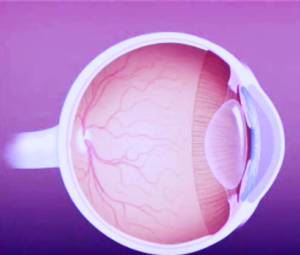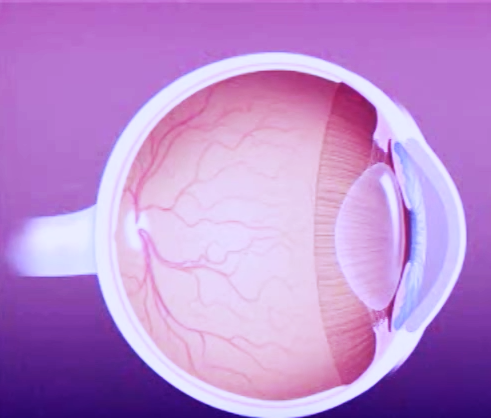LASIK eye surgery is a popular refraction surgery that is performed to correct common vision problems and reduce the need for a patient to be dependent on contact lenses or prescription eyeglasses. The term refractive surgery refers to a series of surgical procedures that work to solve vision problems such as farsightedness, nearsightedness, presbyopia, and astigmatism.
While LASIK eye surgery may be the most popular of the refractive surgery procedures in the United States, there may be other forms of refractive surgery that may do better for you than LASIK, it mainly depends of your particular eye problem and treatment needs.
LASIK stands for laser-assisted in situ keratomileusis, and it is a very common laser eye surgery intended to treat myopia, also known as nearsightedness. It can also treat other visions problems like astigmatism and hyperopia, also known as farsightedness. LASIK works to reshape the cornea so that light that enters the eye is properly focused onto the eye’s retina to allow for a clearer vision.
Laser eye surgery is preferred because it’s more accurate, pain-free, and takes only a few minutes. A patient who has the surgery done will have improved vision without needing to wear contact lenses or eyeglasses and the results of the procedure may be seen within 24 hours of surgery. Some people may not be good candidates for LASIK surgery, therefore other vision correction surgeries may be considered such as LASEK, PRK, and phakic IOL. An eye doctor can find out which refractive surgery procedure best suits your eye condition and the best technique to use.
Success Rate
Patient satisfaction is as high as 98 percent. American Society of Cataract and Refractive Surgery in 2008 based their findings on the data provided by 3000 peer reviewed articles from clinical journalists all over the world and stated that patient satisfaction was between 92 and 98 percent.

How LASIK Surgery is Performed
In performing LASIK surgery, an eye surgeon uses a tool referred to as a microkeratome that helps in creating a thin, circle-like flap in a patient’s cornea. The hinged flap is then folded back to allow the surgeon to access cornea or stroma. Some corneal tissue is removed with use of an excimer laser. The specialized laser makes use of a cool UV light beam to help ablate or remove tiny, microscopic tissue from cornea. The removal of the tissue reshapes the cornea so that it is more accurate in focusing light on retina. This way, it helps improve the vision of the patient.
With nearsighted patients, the surgery aims at flattening the cornea while farsighted person need a steeper cornea. There has been a misconception that it’s not possible to treat astigmatism with excimer lasers, however, that may not be true. In fact eye surgeons can use excimer lasers to correct astigmatism. This is achieved by smoothing the irregular cornea to get it to a normal shape. When the laser has reshaped the cornea, a surgeon puts the flap back in place to cover the area where corneal tissue has been removed. The cornea is then allowed to heal naturally. With laser eye surgery, it only requires the surgeon to use anesthetic drops. There are no bandages or even stitches to be used.
Average age for LASIK Eye Surgery
The minimum age for LASIK Eye Surgery is 18 years. It is important to check with the doctor who will take a call on whether you are the candidate for the procedure. It has been seen that the average age of people who call in for LASIK eye surgery is around 35 to 38 years of age. As on 2018, it has been seen that people who have been born in 1976 and 1996 are more likely to for laser as a corrective procedure. This is the generation that has grown up with changes in technology from color televisions to computer to smartphones.
Prior to The Surgery
Before having a LASIK surgery, an eye doctor will examine your eyes to make sure they are sufficiently healthy for the surgery procedure. Some people may not be good candidates for LASIK surgery. The eye doctor will look at the thickness and shape of the cornea. He or she will examine the size of pupil and determine the refractive errors such as hyperopia, myopia, and astigmatism. The doctor also looks for any other eye conditions that may be present. Best candidates for the LASIK eye surgical procedure are those with mild or moderate myopia, astigmatism, hyperopia, and those with adequate corneal thickness.
Other things that an eye doctor will check before performing a LASIK surgery are such as:
- Moistness of the eyes. The eye doctor checks the moisture in the eyes and where necessary, precautionary measures are put in place to prevent a patient having dry eyes following the surgical procedure.
- Medical history. The doctor will examine your general health history and find out if there may be any medications you may be taking so that he or she evaluates your candidacy for the surgery.
- Measuring the curvature. An eye surgeon uses a corneal topographer to get measures for the curvature of the eye’s front surface. This helps in creating a map of the cornea.
- Stop wearing contact glasses. An eye doctor will advise a patient to stop putting on their contact lenses at least two weeks before they have the LASIK procedure or before they undergo an eye exam. Contact lenses usually change the natural shape of cornea.
What To Expect
During the surgery, an eye doctor will firm numb the eyes using numbing eye drops to help prevent discomfort. Some medication may be given to help relax the body. The eye is positioned under a laser with a lid speculum keeping the eyelids open. An ink marker is used to mark your cornea and a flap is created. A suction ring is used to help prevent eye movements and loss of contact.
After creating the corneal flap, a computer adjusts the excimer laser depending on your prescription. The eye surgeon will ask you to look at the target light, usually for a short time. During that time you are looking at the light, the surgeon will be watching the eyes via a microscope and the laser will be sending pulses of light right to the cornea. It is the laser light pulses that are used to painlessly reshape your cornea.
LASIK Eye Surgery Recovery
Once your LASIK surgery is complete, the surgeon will allow you to rest for a while. Immediately after the procedure, you may experience an itching sensation or feel some temporary burning, and that is expected. You will need someone to drive you home because you cannot do that after having LASIK surgery until you are examined the following day to confirm that you are able to drive.
You may also experience haziness and blurry vision immediately the surgery is complete, however, by the following morning, clarity of your vision should have improved. Your eyesight will continue improving within the next few days. Sometimes it may take longer, say a couple of weeks or so. But for a majority of patients who undergo LASIK surgery, their vision improves immediately.
The eyes tend to be watery after the Lasik Eye surgery, which is a normal post-operative symptom. It is very important that you do not rub the eye. During the recovery of Lasik Eye surgery, the corneal flap is delicate and healing. The doctor will prescribe eye drops to keep your eyes lubricated and keep you from itching the area.
It is natural to feel a sense of discomfort in the eye for the first few days after the eye surgery, the feeling is that of something lashing in the eye. This is normal, and your doctor will ensure that your eyes remain lubricated as a part of the treatment. You may be given eye-drops and told to wear sunglasses in case you are going out, to reduce photosensitivity. You may also be asked to refrain from swimming, wearing makeup etc. for some days.
While you may go to work the following day, eye doctors advice that you have some rest for a couple of days. You should not indulge in strenuous exercises after the surgery for the next days or at least a week. You will have to go back to the doctor the following day where he or she tests your vision just to ensure you can drive without contact lenses or glasses.
Lasik Eye Surgery Recovery Time on a Long Term
Your eyes may take at least 2 to 3 months to heal completely. There are some people who may need 6 months as recovery time to get improved vision. There is no concrete recovery time, as people are known to heal differently but 3 months is a generalized window period.
Many people who take LASIK surgery have a dramatic improvement of their vision and quality of life. They achieve 20/20 vision or so following the surgery, though the results may vary. You may have individuals who get a vision of 20/40 or less. Even after the surgery, you may still continue wearing contact lenses or glasses but typically the prescription is lower compared to the time when you had no surgery performed.
If you experience sensitivity to sunlight following the LASIK surgery, you may need to wear photochromic lenses. A person may also need to use reading glasses when they attain the age of 40 mainly because of loss of near vision that is associated with age.

